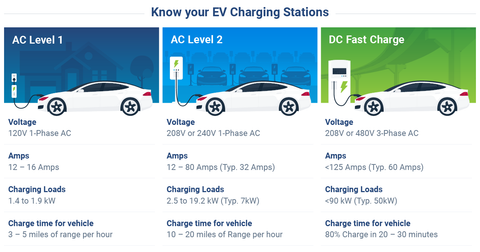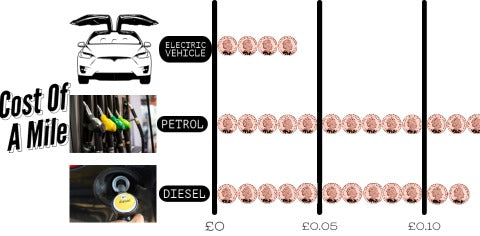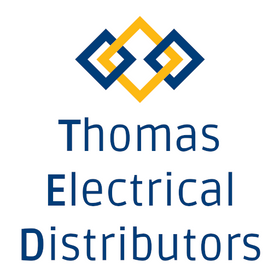EV Chargers - A Complete Guide
EV Chargers
Electric vehicles (EVs) are becoming increasingly popular as people seek more environmentally friendly modes of transportation. Charging an electric vehicle (EV) can seem intimidating at first, but it's actually a simple and straightforward process. In this article, we'll provide a comprehensive guide to EV charging, covering everything from the different types of charging stations to the cost of charging an EV.
Types of EV Charging Stations
There are three main types of EV charging stations: Level 1, Level 2, and Level 3 (also known as DC fast charging). Each type of charging station provides a different charging speed and requires a different type of charging connector.
Level 1 Charging Stations: Level 1 charging stations are the slowest type of charging station, providing a charging speed of around 4 miles of range per hour of charging. They typically use a standard 120V household outlet and a simple charging cable that plugs into the EV's charging port. Level 1 charging stations are convenient for overnight charging at home, but are not well suited for charging on the go.
Level 2 Charging Stations: Level 2 charging stations provide a faster charging speed of around 25 miles of range per hour of charging. They use a 240V outlet and require a special charging cable that plugs into the EV's charging port. Level 2 charging stations are commonly found at public charging stations, workplace charging stations, and some multi-unit dwellings.
Level 3 Charging Stations: Level 3 charging stations are the fastest type of charging station, providing a charging speed of around 100 miles of range in just 30 minutes. They use a 480V outlet and require a special charging cable that plugs into the EV's charging port. Level 3 charging stations are not as common as Level 1 or Level 2 charging stations, but they are becoming more widely available as the demand for fast charging grows.

EV Charging Connectors
There are several different types of charging connectors that are used with EVs, each with its own unique design. The most common types of charging connectors are the J1772, CHAdeMO, and CCS (Combined Charging System) connectors.
J1772 Connector: The J1772 connector is used with most Level 1 and Level 2 charging stations in North America. It is a standard charging connector that is compatible with most EVs sold in the US.
CHAdeMO Connector: The CHAdeMO connector is used with some Level 3 charging stations, primarily in Japan and other parts of Asia. It is not as widely used in North America, but it is becoming more common as more Level 3 charging stations are installed.
CCS Connector: The CCS connector is used with Level 3 charging stations in Europe and North America. It is the most common type of fast charging connector and is compatible with most new EVs sold in these regions.
Cost of Charging an EV
The cost of charging an EV depends on several factors, including the cost of electricity, the type of charging station used, and the size of the EV's battery.
Level 1 Charging: Level 1 charging is the least expensive type of charging, as it uses a standard 120V household outlet. The cost of charging an EV using a Level 1 charging station will vary depending on the cost of electricity in your area.
Level 2 Charging: Level 2 charging is typically more expensive than Level 1 charging, as it requires a special charging cable and a 240V outlet. The cost of charging an EV using a Level 2 charging station will also vary depending on the cost of electricity in your area, but it will typically be higher than the cost of Level 1 charging.
Level 3 Charging Stations (DC Fast Charging Stations): Level 3 charging stations, also known as DC fast charging stations, are the fastest type of charging station and can charge an EV in just 30 minutes to an hour. These charging stations use a 480V outlet and are typically found at commercial and public charging stations.

The Charging Process
The charging process for an EV is relatively simple and straightforward. Once you have located a charging station, you will need to plug your EV into the station using the charging cord that comes with your vehicle. The charging station will then begin to transfer energy to your EV, which will be stored in the vehicle's battery.
One of the key factors that can impact the charging time of an EV is the charging station's power output. A higher power output means that more energy can be transferred to the vehicle in a shorter amount of time. For example, a Level 3 charging station has a much higher power output compared to a Level 1 charging station, which means it can charge an EV much faster.
Another factor that can impact the charging time of an EV is the battery's state of charge (SOC). The SOC refers to the amount of energy that is stored in the battery, and it can have a big impact on the charging time. For example, if the battery is nearly empty, it will take longer to fully charge it compared to a battery that has a higher SOC.
Factors That Can Impact Charging Time
There are several factors that can impact the charging time of an EV, including:
Battery Size: The larger the battery, the more energy it can store, which means it will take longer to fully charge.
Battery Age: As an EV battery ages, its charging speed can decrease, which means it will take longer to fully charge.
Charging Station Power Output: As mentioned above, the charging station's power output can have a big impact on the charging time.
Ambient Temperature: The temperature can impact the charging time of an EV, with colder temperatures slowing down the charging process.
Vehicle Usage: If you are using your EV for driving while it is charging, it will take longer to fully charge compared to if the vehicle is not in use.
Our  EV Chargers
EV Chargers
See our full range of EV Chargers! TrusTED EV Chargers

